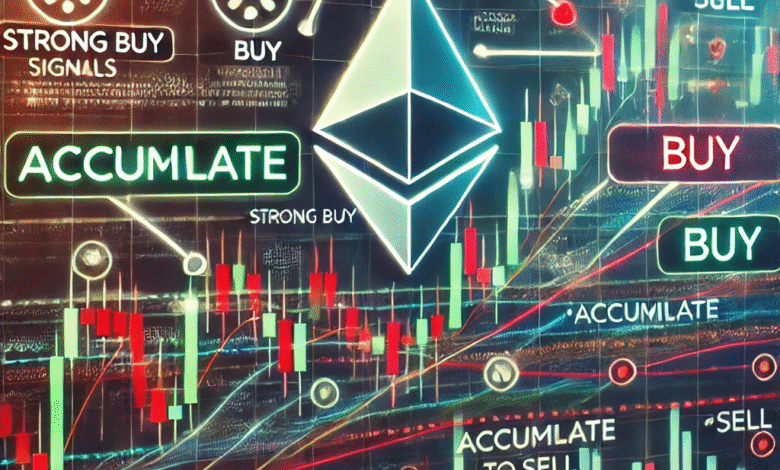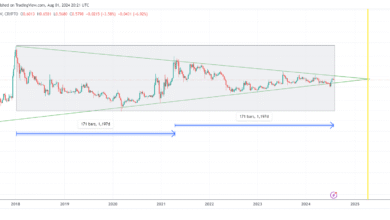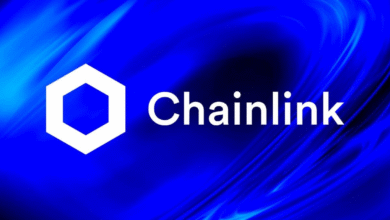Altcoins Market Analysis: What’s Happening in 2024?

In the rapidly evolving landscape of cryptocurrency, altcoins market analysis has become a focal point for many investors looking to navigate the complexities of this digital frontier. Recent shifts in cryptocurrency trends, particularly the impact of Bitcoin ETF approval, have paved the way for institutional investment in crypto at unprecedented levels. Despite Bitcoin’s record highs, the anticipated “altcoin season” many have been waiting for has yet to materialize, leaving numerous altcoins trading at historical lows. This paradox raises critical questions about the current state of the altcoin market and its dynamics within crypto market cycles. In this analysis, we delve into the factors shaping the altcoins landscape and explore potential investment opportunities as the market adjusts to evolving regulatory environments.
The current examination of alternative cryptocurrencies—commonly referred to as altcoins—offers insights into the intricate dynamics of this sector. As experienced investors keenly monitor the shifts in digital asset trends, the implications of Bitcoin’s recent price surges and institutional interest cannot be overlooked. While the anticipated rally in alternative tokens, often dubbed altcoin season, appears elusive, many traders remain hopeful for signs of recovery. Understanding the influences at play requires a look into market cycles and the evolving regulatory landscape that characterizes today’s crypto environment. This analysis provides a comprehensive overview of the challenges and opportunities present within the altcoin market, emphasizing the need for strategic approaches in this fluctuating investment space.
Understanding Crypto Market Cycles
The behavior of cryptocurrency markets tends to follow well-established cycles characterized by distinct phases. Traditionally, after a Bitcoin halving event, we would witness a surge in Bitcoin prices, often leading to a subsequent rally in altcoins, followed by a bear market and recovery phase. However, this cycle has met a unique twist recently, where Bitcoin reached a new all-time high ahead of the anticipated halving in 2024. This evolution can largely be attributed to unprecedented institutional investment driven by U.S. ETF approvals, which have significantly altered the playing field for Bitcoin and other major cryptocurrencies.
The absence of the expected altcoin season raises crucial questions about market dynamics. While Bitcoin enjoys the spotlight amid institutional interest, many altcoins remain tethered to previous price levels, failing to benefit from the same momentum. The divergence observed in the altcoin market indicates that not all cryptocurrencies are created equal, as regulatory access limits participation from institutions, leaving much of the market in limbo. With the lack of a clear investment pathway for altcoins, investors are left questioning the potential of these assets to replicate the explosive growth seen in previous cycles.
The Altcoins Market Analysis: Trends Post-ETF Approval
Following the approval of Bitcoin ETFs in the U.S., the cryptocurrency market has seen a notable shift. Institutional players, who have been on the fence, are now able to dive into Bitcoin through regulated avenues. However, this regulatory clarity hasn’t cascaded to altcoins in the same manner, creating a disparity where only a few standout projects are gaining institutional traction. This lack of broad support for altcoins raises concerns about their future performance, and leads to a prolonged stall in what many analysts expected to develop into an altcoin season.
Currently, the altcoin market is fragmented, with many promising projects excluded from public exchanges or ETFs. As a result, they lack exposure and accessibility for institutional investors who could potentially provide the liquidity needed for growth. This status quo leaves altcoins vulnerable to price manipulation and speculative trading, contributing to a market environment that discourages substantial investment. Until regulatory clarity extends to altcoins, they risk remaining overshadowed by Bitcoin, stunting the overall growth of the ecosystem.
Examining the altcoin market reveals subtle layers of opportunity, despite the current stagnation. While many altcoins are struggling, a select few are showcasing robust technological advancements and innovative designs, yet they face an uphill battle for recognition among mainstream investors. The landscape suggests a potential bifurcation within the altcoin universe, whereby institutional focus may eventually gravitate towards those with clear use cases and regulatory compliance, rather than unsupported projects with high FDVs.
The Role of Retail Investors in Today’s Market
Retail investors have historically played a crucial role in the growth of cryptocurrencies, often driving prices up during bull markets. However, in the wake of market speculation and regulatory uncertainty, they are now more cautious. Many are disillusioned after previous cycles, where promised gains turned into losses due to poor project transparency and inflated valuations. With established patterns of market manipulation becoming more evident, retail investors are finding it increasingly difficult to navigate the complexities of the current environment.
The frustration among retail investors stems from the perceived asymmetry of information available to them compared to institutional players. As retail faces barriers to early participation in promising ICOs, and as many new tokens present misleading market caps and FDVs, the opportunity for growth seems more elusive. Consequently, many retail investors are retreating back to Bitcoin, perceived as a safer investment path, where information is clearer and the potential for growth remains intact.
Barriers to Institutional Investment in Altcoins
Despite the growth of the cryptocurrency market, institutional investment faces significant barriers, especially concerning altcoins. Institutional investors prioritize regulations and the stability of financial instruments, and many altcoins do not yet have the framework to provide them with confidence. The absence of clear guidelines and the lack of inclusion in ETFs limit institutional access to altcoins, resulting in a significant portion of the market being unable to leverage institutional liquidity and stability.
The current stalemate means that even promising altcoins that show technological promise struggle to gain traction among institutional investors. They require a robust legal framework and compliance structure to provide necessary reassurance. The ongoing regulatory efforts in the U.S., such as the upcoming GENIUS Act and CLARITY Act, demonstrate potential pathways for easing these barriers. However, until these regulations are fully implemented and altcoins receive recognition, the discrepancy between Bitcoin and altcoins will likely persist.
The Lemon Market Effect in Crypto
The term ‘lemon market’ emerges in discussions about the crypto landscape, highlighting how a lack of quality differentiation among projects creates an environment of distrust. Without thorough transparency regarding tokenomics, project intentions, and financial health, retail investors face challenges in discerning quality projects from underperformers. As such, many altcoins become conflated with those lacking substance, leading to mispricing and further disillusionment among potential investors.
This effect reverberates throughout the market, resulting in a reluctance to invest in altcoins due to fear of being misled. As good projects struggle to differentiate themselves in a crowded field, potential gains on quality assets remain overshadowed by speculation prevalent in lower-quality tokens. The situation necessitates significant improvements in transparency and communication from project teams, allowing investors to develop a clearer understanding of where value lies in the altcoin space.
The Catalyst for Regulatory Clarity
The upcoming regulatory reforms heralded by the GENIUS Act and the CLARITY Act represent a critical turning point for the crypto market. With bipartisan support and a focus on establishing clear guidelines for stablecoins and the classification of various crypto assets, these regulations aim to provide the much-needed clarity that institutions have been seeking. With a solid legislative framework, institutional investors will feel more confident deploying capital toward altcoins and developing them as viable investment options.
Such regulatory clarity can eliminate the chaos currently plaguing many altcoins and allow them to enter mainstream capital markets with confidence. Access to regulated financial products may reshape the altcoin landscape, fostering an environment where innovative projects can flourish under structured guidelines. This evolution could subsequently attract a wider range of investors, paving the way for renewed altcoin interest and potentially triggering a new cycle of altcoin growth.
Investment Strategies for Retail Investors
Given the current state of the altcoin market, retail investors must become increasingly strategic in their investment choices. A focused, research-oriented approach can help navigate through the noise by identifying projects that exhibit strong fundamentals, active communities, and transparent operations. Exercises such as thoroughly analyzing whitepapers, understanding tokenomics, and keeping an eye on regulatory news are paramount in making informed decisions.
Additionally, it’s vital for retail investors to remain adaptable and watch for signs of emerging trends in the crypto space. Collaborating within community forums or engaging with seasoned investors can provide additional insights and potentially uncover opportunities that align with the evolving market dynamics. Equipping themselves with knowledge and fostering a community-oriented approach can present retail investors with chances to capitalize on high-quality altcoins once the regulatory landscape becomes more favorable.
Future Outlook for Altcoins
As the cryptocurrency market awaits regulatory changes, there is cautious optimism about the future of altcoins. The anticipated legislative framework aims to provide the much-needed access for institutional investments, which could catalyze a resurgence of interest in altcoins. With the potential for greater visibility and increased liquidity, smart capital could flow into a wider range of altcoins beyond Bitcoin and Ethereum, bringing attention to innovative projects that have been sidelined.
However, it’s essential to recognize that not all altcoins will share in the expected benefits. Investors will need to discern quality projects from those that are merely ‘hype-driven.’ The upcoming regulatory clarity will likely favor well-structured, innovative projects that exhibit long-term viability. Thus, the future of altcoins could pivot not just on market cycles but on their ability to demonstrate tangible value and meet real-world needs in a maturing financial landscape.
Conclusion: Opportunities Amid the Challenges
Despite undergoing a turbulent phase, the altcoin market holds significant potential for recovery and growth. The market’s structural misvaluation hints at opportunities for savvy investors who can identify financially sound projects amidst the noise. The forthcoming regulatory clarity can enable altcoins to gain broader acceptance and access, unlocking the potential for substantial returns as institutional investors enter the scene.
Ultimately, the altcoin market’s transition relies on adapting to the evolving landscape, characterized by regulatory changes and shifting investor sentiments. With the right strategies, both retail and institutional investors can position themselves to capitalize on anticipated market shifts, ushering in a new era for altcoins with potential long-term growth aligned with robust investment principles.
Frequently Asked Questions
What are the current trends in altcoins market analysis?
Current trends in altcoins market analysis reveal that despite Bitcoin reaching new all-time highs, there is a notable absence of an altcoin season. This may be attributed to a lack of accessibility and transparency for many altcoins, which are not included in regulated trading platforms or ETFs. Investors are leaning towards assets available through regulated infrastructures, leaving several promising altcoins sidelined.
How does Bitcoin ETF approval impact altcoins market analysis?
Bitcoin ETF approval has opened up institutional investment opportunities in Bitcoin, leading to a divergence in the altcoins market analysis. While Bitcoin and Ethereum gain traction through institutional channels, many altcoins remain excluded from this capital influx. The anticipated regulatory clarity could potentially level the playing field, allowing altcoins to attract institutional interest and drive a resurgence in their prices.
Why is there an absence of an altcoin season despite favorable conditions?
The absence of an altcoin season despite favorable conditions stems from two main factors: retail investors are experiencing fatigue due to losses and a lack of transparency in the altcoin market; and institutional investors are still awaiting clear regulations to enter the space. Without retail enthusiasm and institutional capital flowing into altcoins, many promising projects continue to be undervalued.
What are the implications of market cycles on altcoins market analysis?
Market cycles play a significant role in altcoins market analysis. Historically, Bitcoin’s price rallies have been followed by altcoin surges. However, the current cycle diverges from this pattern due to conditions like ETF approvals, which have primarily benefited Bitcoin. This could mean that the next altcoin rally may not mirror past cycles unless the regulatory landscape changed to facilitate institutional investments in altcoins.
How does institutional investment affect the altcoins market?
Institutional investment significantly affects the altcoins market by increasing accessibility and liquidity for cryptocurrencies. However, most altcoins lack the regulatory framework that attracts institutional capital. Until regulations like the GENIUS and CLARITY Acts are passed, institutional investment in altcoins will remain limited, impacting their overall market performance.
What challenges do retail investors face in altcoins market analysis?
Retail investors face substantial challenges in altcoins market analysis, including high levels of information asymmetry and market fragmentation. Many altcoins are not adequately represented in traditional financial systems, leading to confusion and loss of confidence among retail investors. As a result, distinguishing between high-quality projects and those that are merely speculative ventures is increasingly difficult.
Why are altcoins considered undervalued in current market conditions?
Altcoins are considered undervalued in current market conditions because they remain overlooked amid the recent institutional focus on Bitcoin and Ethereum. Many high-potential altcoins offer substantial technology-driven value but are not receiving the investor attention necessary to realize their potential. Regulatory clarity could unlock access to these altcoins, leading to a revaluation as quality assets rise to the forefront.
What future developments could change altcoins market analysis?
Future developments such as regulatory clarity through laws like the GENIUS and CLARITY Acts can significantly alter the altcoins market analysis landscape. As institutional access to altcoins improves, there’s a potential for significant capital influx and market revaluation. This regulatory environment may catalyze a new altcoin season characterized by stronger fundamentals and increased investor confidence.
| Key Topic | Summary |
|---|---|
| Bitcoin Performance | Bitcoin reached a new all-time high of around $112,000, up 60% from the previous high of $65,000, but lacks a supported bull market. |
| Altcoins Challenge | Many altcoins are stagnating, priced similarly to during the FTX collapse, and exhibit no significant alt season. |
| Market Dynamics | While Bitcoin gains from institutional access due to ETF approvals, altcoins remain excluded, losing opportunity. |
| Retail Investor Impact | Retail investors are frustrated due to lack of clear opportunities, leading to diminished trading in altcoins. |
| Future Projections | Regulatory clarity from upcoming crypto laws may unlock access to altcoins for institutions, improving their fortunes. |
Summary
The altcoins market analysis indicates that the altcoin sector is experiencing significant challenges amidst a robust Bitcoin market. Despite Bitcoin setting new highs influenced by institutional investment, altcoins have struggled in a retail-driven market without strong institutional backing. Upcoming regulatory clarity has the potential to shift this dynamic, opening doors for altcoins and allowing them to thrive again. As the market evolves, discerning high-quality projects from weaker ones will be key for future investors.



